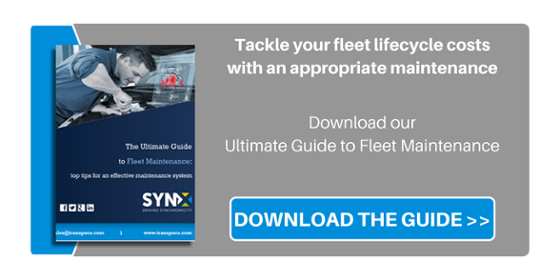
Exactly like any aspect of a fleet operation, the lifecycle costs of a fleet vehicle shouldn’t be regarded as something simplistic or easy to determine. Fleet vehicles are often considered as one dimensional assets whose basic function is to deliver goods, convey specialists to wherever they need to provide their services, help sales teams build their customer base and retain customer loyalty through meetings and negotiations (for which they need a vehicle), and so on. In the main this is usually how fleet vehicles are thought of, and therefore people usually concentrate solely on the outlay for the asset, but the truth is that operational expenses are also a considerable part of the lifecycle cost of a fleet vehicle— and not the only one.
What then are the various aspects that make up the full fleet vehicle lifecycle costs—or, at least, what should we think about when we want to determine a vehicle lifecycle and the costs associated with it?
#1 - Fleet procurement—this is the process of obtaining vehicles or even goods or services and basically boils down to the decision between purchasing or leasing. However, it is a far more complex process than simply ‘buying’ as it involves preliminary preparation, negotiation and strategy phases.
#2 - Operational management—fuel, maintenance, tyres, driver wages, insurance, compliance expenses and anything strictly related to the operation of vehicles and needed for it should be considered in the lifecycle; some aspects might overlap (or not) with that of fleet procurement or fleet management.
#3 - Fleet management—as we know, fleet management involves the coordination of vehicles and the drivers who perform different tasks to achieve the goals required by an organisation. Fleet management might be performed by a single individual, or a group of people if we are dealing with a larger organisation. But fleet management hasn’t for some time been seen merely as logistical, the fleet management team is now expected to concern itself with increased safety, sustainability as a target and the reduction of expenses. So, if operational and fleet management roles might overlap, some activities more connected to company goals and their costs are more typically the jurisdiction of fleet management.
#4 - Risk management—not strictly speaking separated from fleet management itself, and potentially involving not only drivers but risks associated with the company as a whole, the cost of risk management has to be carefully assessed and the related risk and compliance management strategy has to be effective: driving is sometimes a precarious activity and any potential issue that might come up needs to be tackled and prevented before it becomes too costly.
#5 – Remarketing—or vehicle remarketing as we understand the controlled disposal of vehicles, whether due to the termination of a leasing contract or redundancy: the objective of remarketing is to resell/relocate the vehicle in time to minimise the effect of depreciation. The impact of depreciation is something that especially needs to be considered when examining lifecycle costs.



